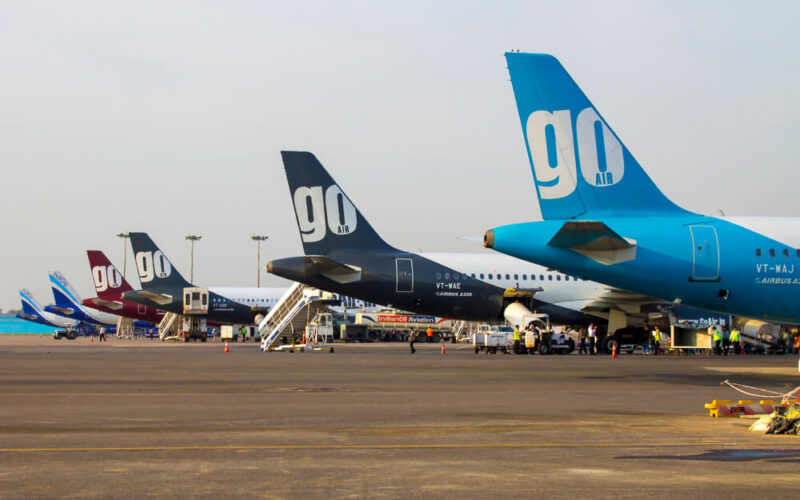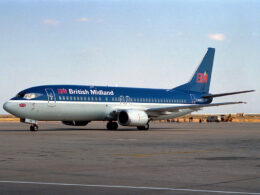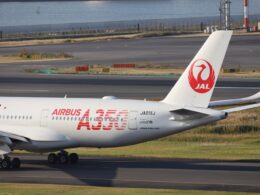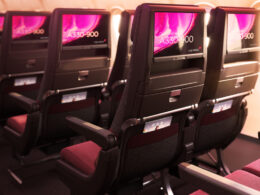As mainline carriers like Air India, Malaysia Airlines and Philippine Airlines struggle to contain their losses and keep losing market share in their domestic markets, somebody has to fill in the void between the demand and lack of capacity. Yet keeping up with the demand in the region is not easy, as passengers have very different consumption practices compared to the markets in Europe or North America. Such conditions are the perfect breeding ground for one type of carrier – a no-frills one.
Read the first part of the Asia-Pacific market overview right here:
Filling the gap
The recent collapse of Jet Airways has left a 10.3% gap in the Indian domestic market, including its low-cost subsidiary Jet Lite. While Jet crumbled in Q1 of 2019 and carried only 0.2% of domestic traffic in India, low-cost carriers pounced on the opportunity to increase their market share. Spice Jet increased its presence by 0.9%, Go Air carried 1.8% more passengers in Q2, while AirAsia’s Indian subsidiary saw 0.8% more passengers. But IndiGo increased its presence by a country mile – the airline carried 4.7% more travelers on its low-cost network, increasing its total market share to 49%. Meanwhile, Air India’s growth was the smallest out of all the airlines – only 0.7% more passengers in Q2 compared to Q1 of 2019. Vistara added 1% to its previous result of 4% of the total market share.
In Indonesia, the battle is tighter – Garuda Indonesia and Lion Air are butting heads for the number one domestic spot. In 2017, Lion Air controlled 51% of the domestic share with Garuda and its low-cost subsidiary, Citlink, controlling 33% of the market. In third place was Sriwijaya Air, followed by AirAsia Indonesia with 13% and 2% of the market, respectively. When Garuda Group took over Sriwijaya’s operations in a partnership, only then the airline managed to catch up and overtake Lion Air as the number one airline group in the country.
But the Indonesian Ministry of Economic Coordinator got into the fistfight for the number one spot – as ticket prices soared and passenger numbers dropped, the ministry imposed a ticket price cap, making some of the routes low-cost. To further help reduce costs, the Indonesian government will prepare “fiscal incentives” to airlines. But the price cap imposed on certain, popular routes like Jakarta – Surabaya or Denpasar – Jakarta. While incentives will help, Garuda, the mainline carrier, has a problem – reducing its operational costs is difficult, as Garuda’s business model of providing a full-service is limiting the flexibility of the airline. While its subsidiaries can be flexible, both Lion Air and AirAsia have the ability to lower its ticket prices and try to increase ancillary revenue, thus reducing the impact of the lower ticket prices.
Unfortunately, Lion Air does not publicly disclose its financial statements, thus it’s hard to judge how the airline has fared financially. However, AirAsia Indonesia has made significant progress in increasing revenue while at the same time reducing its costs. On average, CASK (Cost per Available Seat-Kilometer) in Q2 of 2019 fell by 16% compared to the same period in 2018, while RASK (Revenue per Available Seat-Kilometer) rose by 6%, according to the latest AirAsia financial statement. At the same time, AirAsia Indonesia increased its income from ancillary revenue by 42% compared to H1 2018. Garuda Indonesia so far has turned its operations around in 2019. The Indonesian flag carrier in H1 2019 made a profit of $23 million and most importantly reduced its operational costs from $2.146 billion to $2.106 billion. However, its position is still fairly fragile, especially as AirAsia Indonesia plans to increase its capacity in the country by adding four extra Airbus A320 family aircraft. Lion Air had a fairly difficult period as well after the Boeing 737 MAX crashes and the subsequent groundings. However, as the groundings lift, the 737 MAX will still offer brilliant operating economics – and to sustain Lion Air’s growth, Rusdi Kirana, the chairman of the airline, has said that it “urgently requires” more MAX aircraft.
Meanwhile, in Malaysia, the flag carrier is struggling to sustain its position in the domestic market, as it controls only 21% of the market, a drop of 12% since 2012. AirAsia has managed to capture and hold onto the Malaysian domestic traffic, as it helps 50% of the total passengers travel between destinations in the South East Asian country. What’s even worse for Malaysian Airlines is that it is losing international passengers as well, as AirAsia transfers 18.8 million more passengers than the former.
Philippine Airlines’ situation is quite grim in the domestic market as well. Combined with its low-cost regional subsidiary, PAL Express, the airline carried 8.1 million passengers in 2018. Meanwhile, Cebu Pacific and AirAsia Philippines transferred 12.2 and 4.5 million passengers during the same period. Even with a low-cost subsidiary, Philippine Airlines is getting squeezed out of its home market and, as it struggles to contain its losses and with Cebu Pacific and AirAsia Philippines further increasing their capacity, dark skies might be glooming over the airline.
Consumer power
But the trend of full-service carriers losing the battle for market share is not a surprising one. If in Europe or North America consumers have the choice of whether to travel on low-cost carriers, like Ryanair or mainline airlines like British Airways, the purchasing power within Asia, and especially South/South East Asia is very different.
The Gross Domestic Product (at Purchasing Power Parity) per capita in India is Int$7.874, while in Indonesia it’s Int$13.230. In contrast, in the United Arab Emirates, the GDP (PPP) per capita is Int$69.382, in the Netherlands it’s Int$56.383, while in the airline price-war ridden Germany it’s Int$52.559, according to International Monetary Fund 2018 statistics. Simply put, consumers in those regions have more ability to choose whether they prefer comfort, price or time of the flight. As the economies in both India and Indonesia grow, consumers will be more flexible.
Question remains, however, whether the mainline carriers in Asia-Pacific, especially in the developing countries can counteract the pressure from low-cost carriers and sustain their operations until the local purchasing power is up to the standards of their ticket prices. Air India, Garuda Indonesia, Philippine Airlines and Malaysia Airlines are all attempting to establish their own low-cost regional subsidiaries, with such brands as Air India Express or Citilink operating in the countries.
Another headache for airlines in the region is the strength of their brand internationally. If the flag carriers are unable to offset the losses from domestic routes with international route revenue streams due to a weak presence globally, can they sustain operations at all? Considering the fact that the Indian and Malaysian governments are looking to offload their loss-making airline brands and with Singapore Airlines’ (SIA1) (SINGY) Vistara barely gaining ground, is the region only going to see striving low-cost carriers?
While the airline business is unpredictable and everything can go wrong in an instant, both Airbus’ and Boeing’s demand predictions, with Carsten Spohr anticipating the consolidation of long-haul business to only several carriers, might, unfortunately, become true, especially in the Asia-Pacific region.









